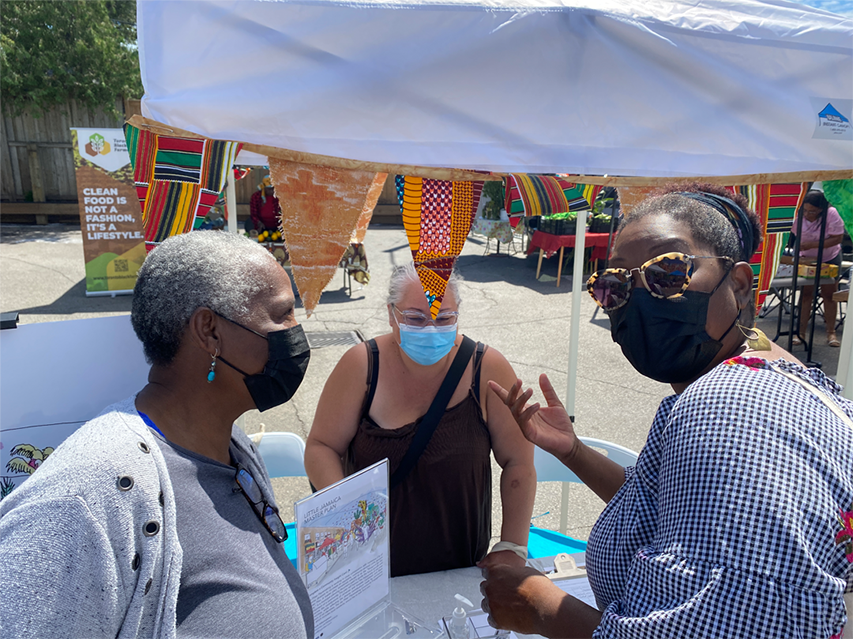
A Big Vision for Little Jamaica: Black Cultural History & Mapping Process
This project implements a design for a Black cultural history and mapping process in association with the creation of a Cultural District of Little Jamaica.
Little Jamaica Infrastructure Walk, 2023 Public History Award nominee. Photo by Jay Pitter. Image courtesy of Jay Pitter.
Market Goers Talking with Jay Pitter Placemaking, 2023 Public History Award nominee. Photo by Debra Scott. Image courtesy of Jay Pitter.
A Big Vision for Little Jamaica, 2023 Public History Award nominee. Photo by Debra Scott. Image courtesy of Jay Pitter.
Winner: 2023 Public History Award
Project Lead: Jay Pitter
Date of Release: June 9, 2022
This project implements a design for a Black cultural history and mapping process in association with the creation of a Cultural District of Little Jamaica.
Given that the area referred to as Little Jamaica has, for decades, been a key site of arrival for Caribbean communities, a key retail corridor populated by a large number of culturally responsive businesses serving Caribbean communities, a key global site of reggae music production, a key site of Caribbean cultural celebrations such as Junior Carnival Parade and Jamaica Day, and a key site of informal gatherings and intangible cultural heritage, it is clear that it should be formally recognized as a cultural district.
The work on Black cultural heritage history-collection and mapping is especially important because it models a new approach centring community knowledge, capacity-building and equity. The approach also emphasizes equitable community engagement. The project team didn’t just engage the community; it also honoured community contributions. The team recognized that this community has been facing an economic crisis, cultural erasure and displacement for a decade.
The project team extensively tied intangible cultural heritage, meaning Black people’s daily cultural practices, rituals and stories, to the built environment. This was a herculean task because due to the legacy of colonialism, particularly slavery, Black people in Little Jamaica and elsewhere don’t own the buildings to which these heritages are connected. These heritages are not recognized in the landscapes, street names, statues and commemorations.
The team used a time-intensive, hands-on approach, combing through community newsletters going back 40-50 years, as well as academic research. It also did extensive community-engaged, community-based mapping. This approach demonstrated how it is possible to centre Black cultural heritage while recognizing Indigenous Peoples and other collective histories, demonstrating what the Practice always says: “There is enough space, joy and justice for all of us.
Additional Project Team Members
Debra Scott: Community engagement and graphic designer
